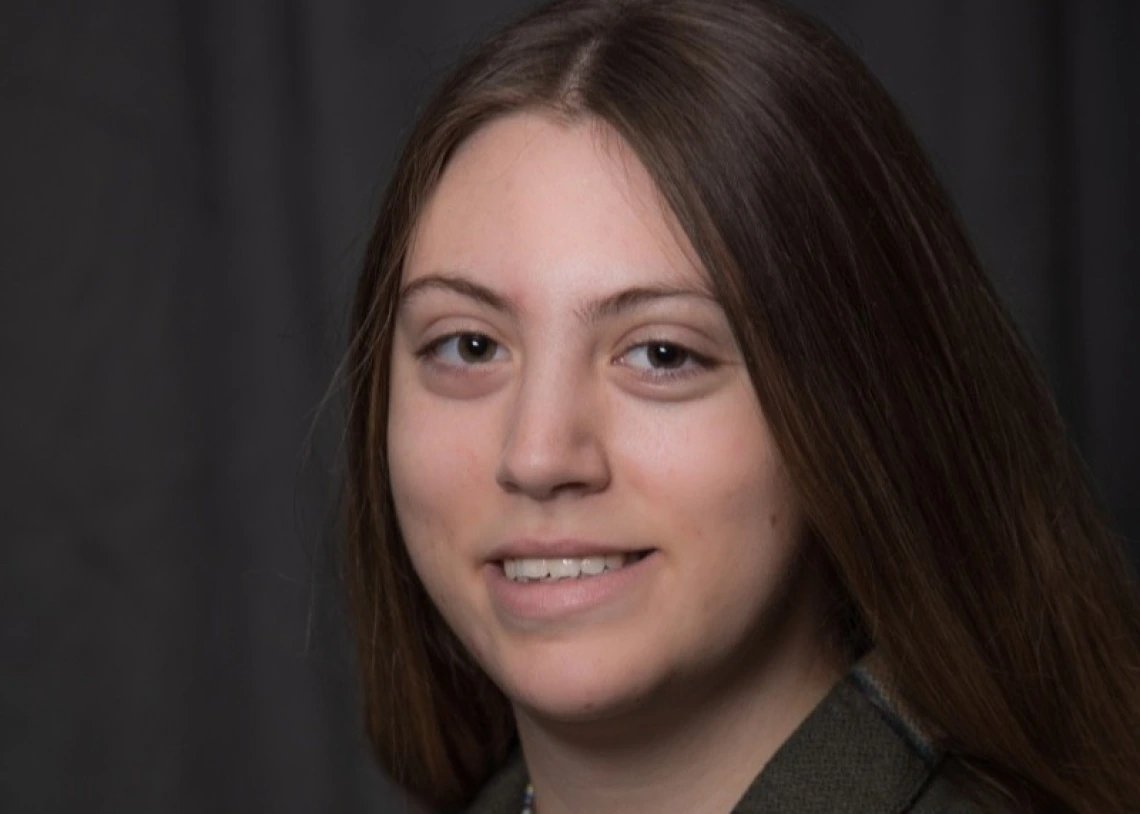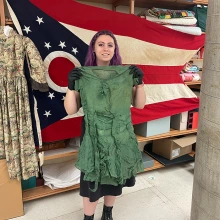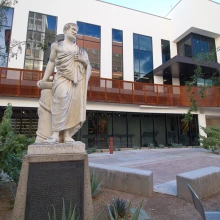Coit Museum Spotlight: Milana Venegoni

Degree: BA in Art History, Minoring in Religious Studies
Class Year: 2025
Milana Venegoni joined the Coit Museum of Pharmacy & Health Sciences in 2024 as the Community Engagement Assistant, working to organize the extensive collection of pharmaceutical objects and artifacts donated to the museum since its inception in 1966. As she prepares to graduate with a degree in Art History later this year, Venegoni has gained valuable experience in museum collections and archiving, and recently was able to attend a weeklong training session hosted by the Arizona Historical Society. Below, she discusses the updates made to the Coit Museum and how her passion for art and archiving began.
The Coit Museum was established nearly sixty years ago, when local pharmacist, Jesse Hurlbut, donated his extensive collection of pharmaceutical memorabilia to the College of Pharmacy. Initially known as the History of Arizona Pharmacy Museum, the exhibit quickly grew into one of the world’s leading collections documenting the history of pharmacy practice and science. In 2021, the dedicated space of the modern museum opened in the Skaggs Pharmaceutical Sciences Center, serving as the unifying link between the building’s original displays and new exhibits. Today, the museum operates with the goal of connecting people to pharmacy and health sciences by collecting, preserving, and interpreting their histories for present and future generations.
“Milana is an incredible asset to the museum,” says Heather Ingram, who joined the Coit Museum as its director in 2024. “She has recently taken on the additional responsibility of supervising an intern and volunteer interested in learning more about cataloguing collections.” As the two main staff members of the museum, Venegoni and Ingram have been working closely together to refresh the collections and exhibits for the 2025 season, a challenge that Venegoni has been instrumental in accomplishing. “Milana is energetic and is ready and happy to help with whatever needs to be done.”
Q & A

What are you learning during the training with the Arizona Historical Society? How does it apply to your role at the museum?
- The Arizona Historical Society trained me in collections and registrar work for the Coit Pharmacy Museum. Right now, we don’t have solid collections records, so I’m developing our collections database and protocols with our new Director, Heather Ingram. We’re all hands on deck for multiple projects, but this is something I’m personally invested in and find rewarding. We’ve been able to expand our collections team with volunteers, and I’m training them to help with collections and archives in the future. I want to give a special thanks to Cody Taylor and Jace Dostal over at the Arizona Historical Society for all of their wisdom and guidance.
What's your favorite part of archival work? How do you get to continue it with the collection at the Coit Museum of Pharmacy & Health Sciences?
- I love searching through records to uncover information about people and objects. It feels like a treasure hunt. We receive emails from people asking for help researching items they have, including old pharmacist documentation. When I come across a person with no other records, it feels like I’m recognizing someone who otherwise wouldn’t have been remembered. I think people have a deep need to leave a mark on the world, and the work I do validates that feeling, telling them that they matter.
What does a typical day in the museum look like for you?
- My daily tasks depend on the events happening at the museum. On large event days, I lead tours, train volunteers, store and accession items, and assist with program development and museum maintenance. Before our director arrived, I was the only employee at the museum, responsible for keeping the place running and mapping out our collections and exhibits. It’s a busy job, but I’m fortunate to always have something new to do!
How did you get started/interested in museum archiving?

- Although I’ve never worked in collections before, I was lucky enough to get an Art & Leadership internship at the Georgia O’Keeffe Museum in Santa Fe, New Mexico. I worked with the education department to help facilitate summer programs for middle school students in the Santa Fe Public School system. One of the museum’s wonderful programs, The Brown Bag Lunches, allowed the interns to hear speakers from every department talk about their work and their career journey. Through these lunches, I learned about the work done by the collections team at GOKM, and I knew that was what I wanted to do. Finding a collections position as an undergrad is tough, so I’m incredibly grateful for the Advisory Board that allowed me to start working in archiving, and for our Director who got me formally trained me at the Arizona Historical Society. I didn’t have any previous archiving experience, and for them to take a chance on me to work in a field I’m passionate about is something I will always be thankful for.
Is there a particular collection or display in the Coit Museum that you enjoy? Why?
- I have a particular fondness for our second-floor exhibition space in the Skaggs building. It was the first space I really worked on, and some of the items on display are delightfully weird and unusual. We have old prescription wine bottles from the Prohibition era, and something labeled “Iodized Syrup of Horse Radish.” It’s a pretty unusual collection, and I love that the installation is from an old pharmacy in Arizona.
What are your future goals? How will working in the Coit Museum help you achieve them?
- In the future, I would love to work in art repatriation and art trafficking. In my opinion, the art world still holds onto a colonialist mindset toward cultural objects. While some museums and institutions are making changes, the larger art market still thrives on missing provenance records and public indifference toward ethical concerns. This allows for the trafficking of artwork for wealthy patrons and the sale of items that may have been stolen from groups wanting them back. Luckily, we don’t face this issue with our items, as the collection mainly consists of donations from individuals who acquired the items themselves. I believe our museum is a good example of how to display items ethically while offering a detailed look at the subject’s history.
If you could curate your own exhibit in the museum, what would you choose?
- If I could create any exhibit, I would focus on women in the medical field. More than 60% of pharmacy students are women today, and women have always played an active role in medicine. However, due to underreporting and lack of representation, women’s contributions, especially in pharmacy, are often overlooked and underrepresented. It’s difficult to find substantial records of multiple women working in pharmacies, even though they’ve been herbalists and medicinal compounders in their homes for years. In Ancient Egypt, women were physicians who gave pregnancy tests and conducted home visits as far back as 2700 B.C. Women have always been in medicine, but have never received proper credit until now. An exhibit on the history of medicine through women’s practices would be a meaningful recognition for countless women who were never acknowledged. I also think the concept of old wives’ tales is important to the medical field. Many of them have a medical context that might not have been fully understood at the time but was often correct. For example, there was an old wives’ tale that if a baby’s forehead tasted salty, it was a sign the baby wouldn’t live long. It turns out this is a clear symptom of cystic fibrosis. Old wives’ tales were not meant to be humorous or gossipy; these women were making clear observations about the medical conditions of those around them, and their conclusions were often relatively accurate. Today, we call those observations scientific hypotheses. The valuation of women’s observations and women’s work is very important to me personally - my mom was a nurse and biochemist for a number of years, so I would love to be able to recognize women’s role in medicine as a fundamental part of pharmaceutical development, not just as a lackadaisical “women existed in 1850 too!” type of display.
To learn more about the amazing work being done by Venegoni and the Coit Museum of Pharmacy & Health Sciences, visit their website. You can request a tour of the museum through the Qualtrics form here.

